DX200 OPTIONS
INSTRUCTIONS
FOR ETHERNET SERVER FUNCTION:
ADVANCED FEATURE OF DX200 ETHERNET FUNCTION
Upon receipt of the product and prior to initial operation, read these instructions thoroughly, and retain
for future reference.
MOTOMAN INSTRUCTIONS
MOTOMAN-- INSTRUCTIONS
DX200 INSTRUCTIONS
DX200 OPERATOR’S MANUAL
DX200 MAINTENANCE MANUAL
The DX200 Operator’s manual above corresponds to specific usage.
Be sure to use the appropriate manual.
Part Number:
Revision:
165984-1CD
0
MANUAL NO.
HW1481823
0
1/60�
Adavanced Ethernet
Function
165984-1CD
MANDATORY
• This manual explains the Ethernet Server function of the DX200
system. Read this manual carefully and be sure to understand its
contents before handling the DX200.
• General items related to safety are listed in Chapter 1: Safety of the
DX200 Instructions. To ensure correct and safe operation, carefully
read the DX200 Instructions before reading this manual.
CAUTION
• Some drawings in this manual are shown with the protective covers
or shields removed for clarity. Be sure all covers and shields are
replaced before operating this product.
• The drawings and photos in this manual are representative
examples and differences may exist between them and the
delivered product.
• YASKAWA may modify this model without notice when necessary
due to product improvements, modifications, or changes in
specifications. If such modification is made, the manual number will
also be revised.
If your copy of the manual is damaged or lost, contact a YASKAWA
representative to order a new copy. The representatives are listed
on the back cover. Be sure to tell the representative the manual
number listed on the front cover.
•
• YASKAWA is not responsible for incidents arising from unauthorized
modification of its products. Unauthorized modification voids your
product's warranty.
ii
HW1481823
2/60�
165984-1CD
Adavanced Ethernet
Function
Notes for Safe Operation
Read this manual carefully before installation, operation, maintenance, or
inspection of the DX200.
In this manual, the Notes for Safe Operation are classified as
“WARNING”, “CAUTION”, “MANDATORY”, or “PROHIBITED”.
WARNING
CAUTION
MANDATORY
PROHIBITED
Indicates a potentially hazardous
situation which, if not avoided, could
result in death or serious injury to
personnel.
Indicates a potentially hazardous
situation which, if not avoided, could
result in minor or moderate injury to
personnel and damage to equipment.
It may also be used to alert against
unsafe practices.
Always be sure to follow explicitly the
items listed under this heading.
Must never be performed.
Even items described as “CAUTION” may result in a serious accident in
some situations.
At any rate, be sure to follow these important items
NOTE To ensure safe and efficient operation at all times, be sure to
follow all instructions, even if not designated as "CAUTION"
and "WARNING".
iii
HW1481823
3/60�
Adavanced Ethernet
Function
165984-1CD
WARNING
• Before operating the manipulator, check that servo power is turned
OFF pressing the emergency stop buttons on the front door of the
DX200 and the programming pendant.
When the servo power is turned OFF, the SERVO ON LED on the
programming pendant is turned OFF.
Injury or damage to machinery may result if the emergency stop circuit
cannot stop the manipulator during an emergency. The manipulator
should not be used if the emergency stop buttons do not function.
Figure 1: Emergency Stop Button
• Once the emergency stop button is released, clear the cell of all
items which could interfere with the operation of the manipulator.
Then turn the servo power ON.
Injury may result from unintentional or unexpected manipulator motion.
Figure 2: Release of Emergency Stop
TURN
• Observe the following precautions when performing teaching
operations within the P-point maximum envelope of the
manipulator:
– View the manipulator from the front whenever possible.
– Always follow the predetermined operating procedure.
– Keep in mind the emergency response measures against the
manipulator’s unexpected motion toward you.
– Ensure that you have a safe place to retreat in case of
emergency.
Improper or unintended manipulator operation may result in injury.
• Confirm that no person is present in the P-point maximum envelope
of the manipulator and that you are in a safe location before:
– Turning ON the power for the DX200.
– Moving the manipulator with the programming pendant.
– Running the system in the check mode.
– Performing automatic operations.
Injury may result if anyone enters the P-point maximum envelope of the
manipulator during operation. Always press an emergency stop button
immediately if there is a problem. The emergency stop buttons are
located on the right of the front door of the DX200 and the programming
pendant.
iv
HW1481823
4/60�
165984-1CD
Adavanced Ethernet
Function
CAUTION
• Perform the following inspection procedures prior to conducting
manipulator teaching. If problems are found, repair them
immediately, and be sure that all other necessary processing has
been performed.
– Check for problems in manipulator movement.
– Check for damage to insulation and sheathing of external wires.
• Always return the programming pendant to the hook on the DX200
cabinet after use.
The programming pendant can be damaged if it is left in the
manipulator's work area, on the floor, or near fixtures.
• Read and understand the Explanation of Warning Labels in the
DX200 Instructions before operating the manipulator:
Definition of Terms Used Often in This Manual
The MOTOMAN is the YASKAWA industrial robot product.
The MOTOMAN usually consists of the manipulator, the controller, the
programming pendant, and supply cables.
In this manual, the equipment is designated as follows:
Equipment
DX200 controller
DX200 programming pendant
Cable between the manipulator ans the
controller
Manual Designation
DX200
Programming pendant
Manipulator cable
v
HW1481823
5/60�
Adavanced Ethernet
Function
165984-1CD
Descriptions of the programming pendant, buttons, and displays are
shown as follows:
Equipment
Programming
Pendant
Character
Keys
Symbol
Keys
Axis Keys
Number Keys
Keys pressed
simultaneously
Displays
Manual Designation
The keys which have characters printed on
them are denoted with [ ].
ex. [ENTER]
The keys which have a symbol printed on them
are not denoted with [ ] but depicted with a small
picture.
GO BACK
GO BACK
PAGE
PAGE
ex. page key
The cursor key is an exception, and a picture is
not shown.
“Axis Keys” and “Number Keys” are generic
names for the keys for axis operation and
number input.
When two keys are to be pressed
simultaneously, the keys are shown with a “+”
sign between them, ex. [SHIFT]+[COORD]
The menu displayed in the programming
pendant is denoted with { }.
ex. {JOB}
Description of the Operation Procedure
In the explanation of the operation procedure, the expression "Select • • • "
means that the cursor is moved to the object item and the SELECT key is
pressed, or that the item is directly selected by touching the screen.
Registered Trademark
In this manual, names of companies, corporations, or products are
trademarks, registered trademarks, or bland names for each company or
corporation. The indications of (R) and TM are omitted.
vi
HW1481823
6/60�
165984-1CD
Adavanced Ethernet
Function
Table of Contents
1 Introduction ..................................................................................................................................... 1-1
1.1 Features ............................................................................................................................ 1-1
1.1.1 Request of Multiple Processes............................................................................. 1-1
1.1.2 Simplification of Communication Procedure......................................................... 1-1
1.1.3 Communication with Other Than MOTOCOM...................................................... 1-1
1.2 System Outline .................................................................................................................. 1-2
2 System Configuration...................................................................................................................... 2-1
2.1 Setting of Ethernet Function .............................................................................................. 2-1
2.2 Setting of Ethernet Server Function................................................................................... 2-1
2.3 Setting of Transmission Parameters.................................................................................. 2-1
3 Transmission Procedure................................................................................................................. 3-1
3.1 Outline ............................................................................................................................... 3-1
3.1.1 Socket Connection ............................................................................................... 3-2
3.1.2 START Request ................................................................................................... 3-2
3.1.3 Response to START Request .............................................................................. 3-2
3.1.4 Command............................................................................................................. 3-2
3.1.4.1 Command................................................................................................ 3-2
3.1.4.2 Size ......................................................................................................... 3-2
3.1.5 Response to Command........................................................................................ 3-3
3.1.6 Command Data .................................................................................................... 3-3
3.1.7 Answer ................................................................................................................. 3-3
3.1.8 Closing of a Socket .............................................................................................. 3-3
3.2 Command Details .............................................................................................................. 3-4
3.2.1 Status Read Function........................................................................................... 3-4
3.2.1.1 Read/Monitor Command ......................................................................... 3-4
3.2.1.2 Read/Data Access System Command.................................................. 3-11
3.2.2 System Control Function .................................................................................... 3-17
3.2.2.1 Operation System Command................................................................ 3-17
3.2.2.2 Start-Up System Command .................................................................. 3-22
3.2.2.3 Editing System Commands................................................................... 3-30
3.2.2.4 Job Selection System Command .......................................................... 3-37
3.2.3 I/O Read/Write Function..................................................................................... 3-38
3.2.3.1 Read-Out of I/O Signal Status............................................................... 3-38
3.2.3.2 Write-in of I/O Signal Status.................................................................. 3-39
vii
HW1481823
7/60�
Adavanced Ethernet
Function
Table of Contents
165984-1CD
3.3 Transmission Examples...................................................................................................3-40
3.3.1 Read-Out of Status for Mode, Cycle, etc............................................................3-40
3.3.2 Read-Out of I/O Signals for the DX200 ..............................................................3-40
3.3.3 Write-In of I/O Signals for the DX200 .................................................................3-41
3.3.4 Continuous Execution of Multiple Commands....................................................3-42
4 Function Checkout Procedure.........................................................................................................4-1
4.1 Cable Connection Check ...................................................................................................4-1
4.2 Connection Check with Lower Protocol .............................................................................4-2
4.3 Connection Check with telnet ............................................................................................4-3
5 Restrictions .....................................................................................................................................5-1
5.1 Automatic Close of Socket.................................................................................................5-1
5.2 Unavailable Command/Function........................................................................................5-1
5.3 Restrictions on the Number of Sockets..............................................................................5-2
5.4 Restrictions on Text Length ...............................................................................................5-2
5.5 Restrictions on Access from Multiple Host Computers......................................................5-2
viii
HW1481823
8/60�
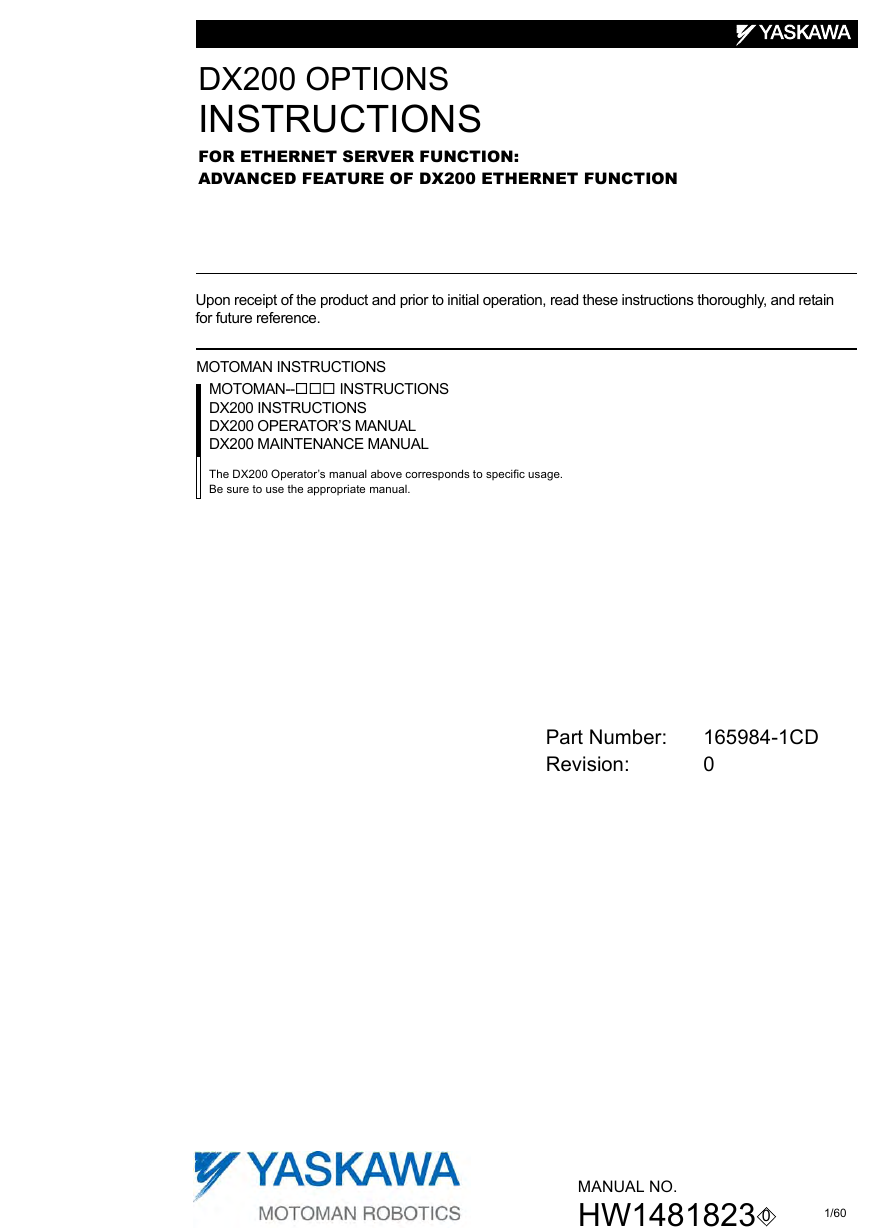
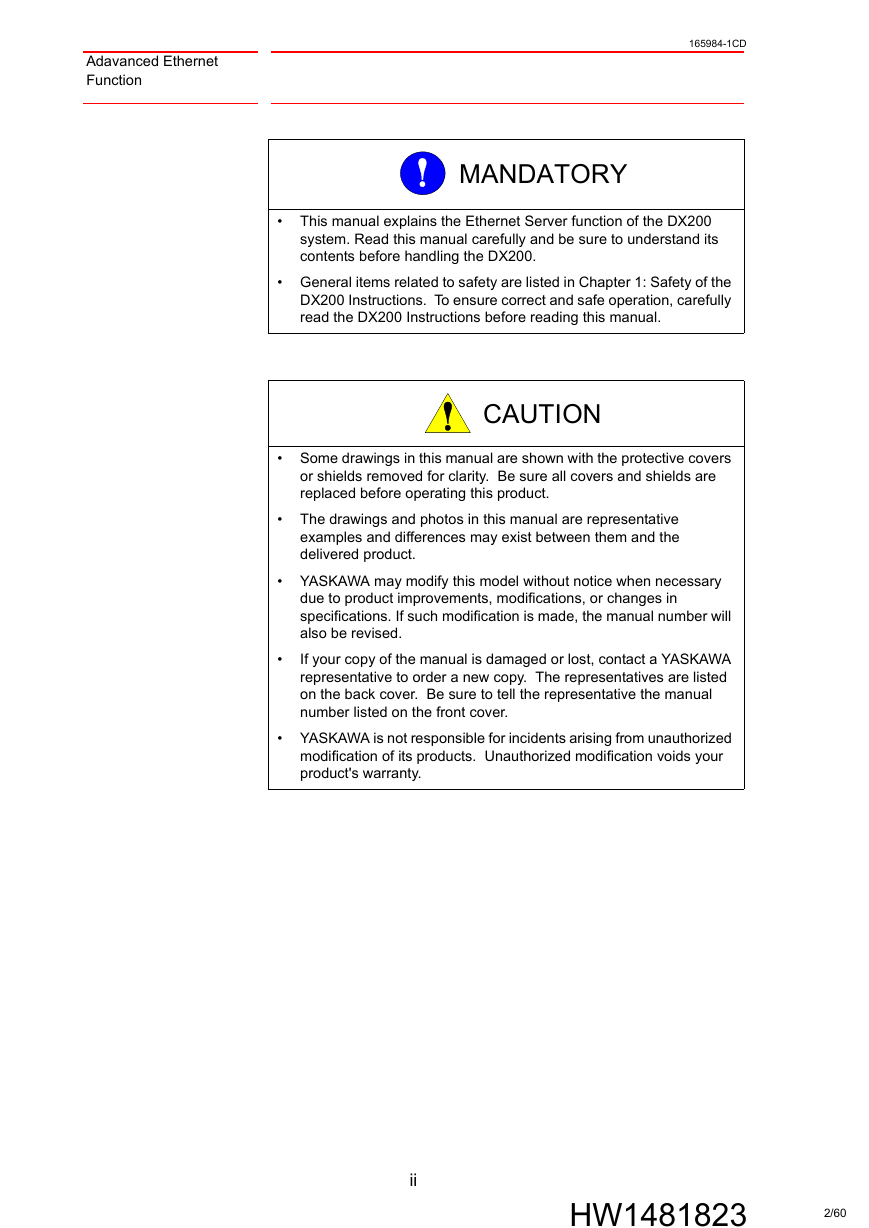
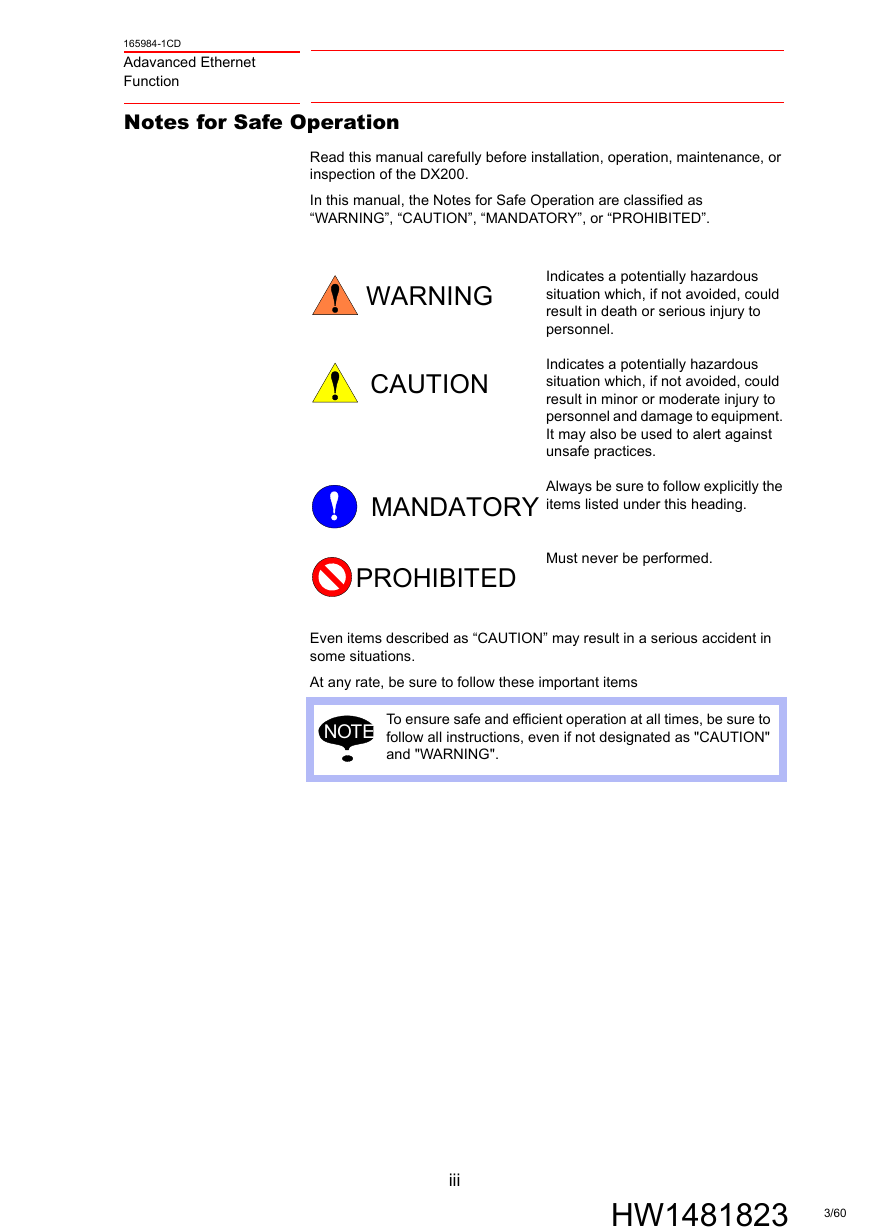
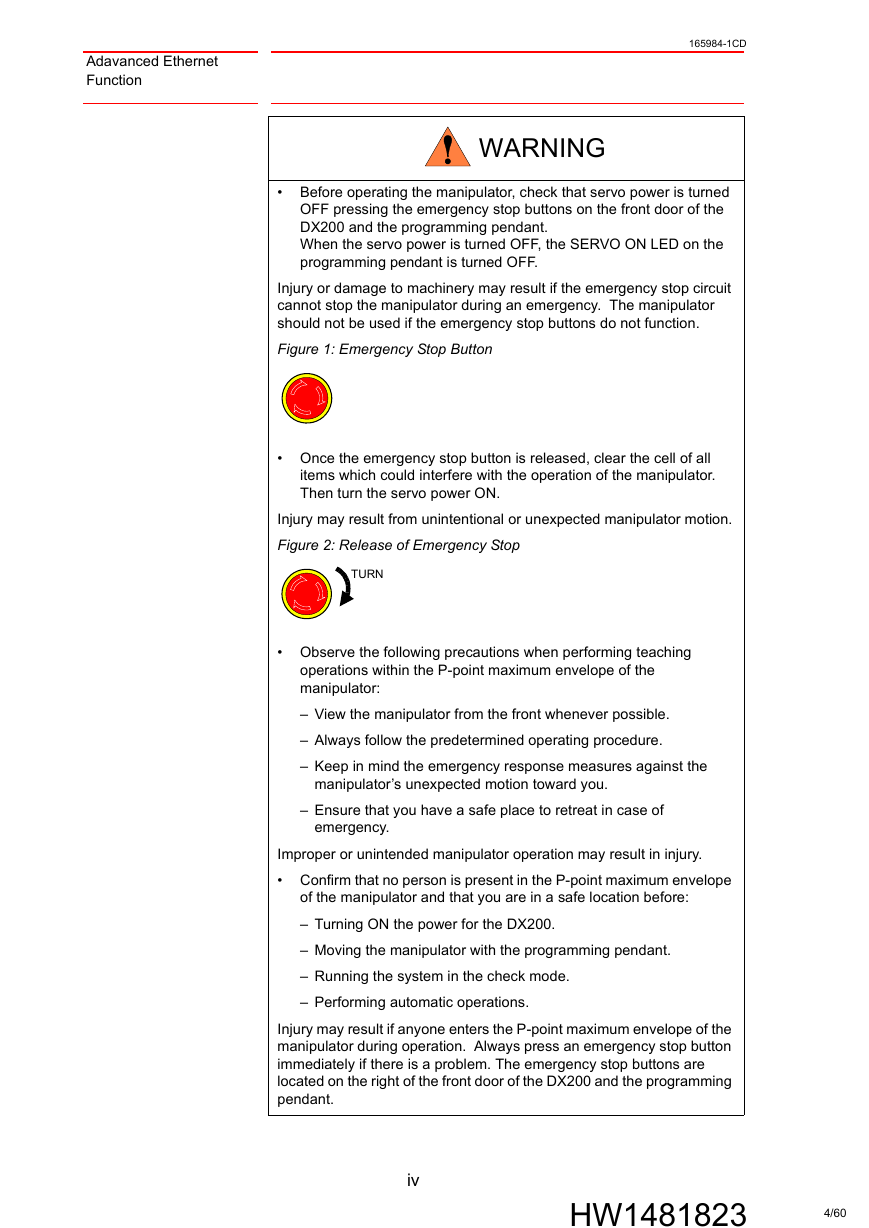
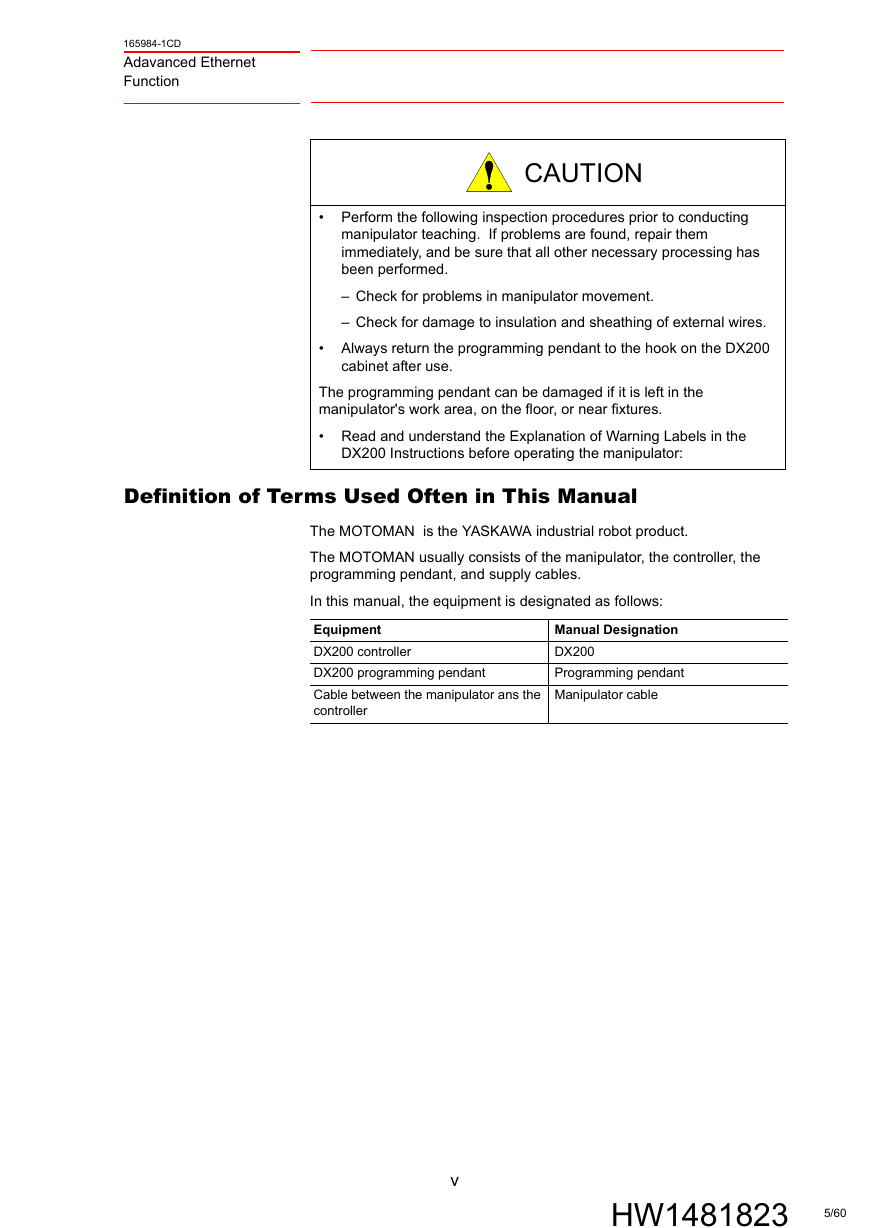
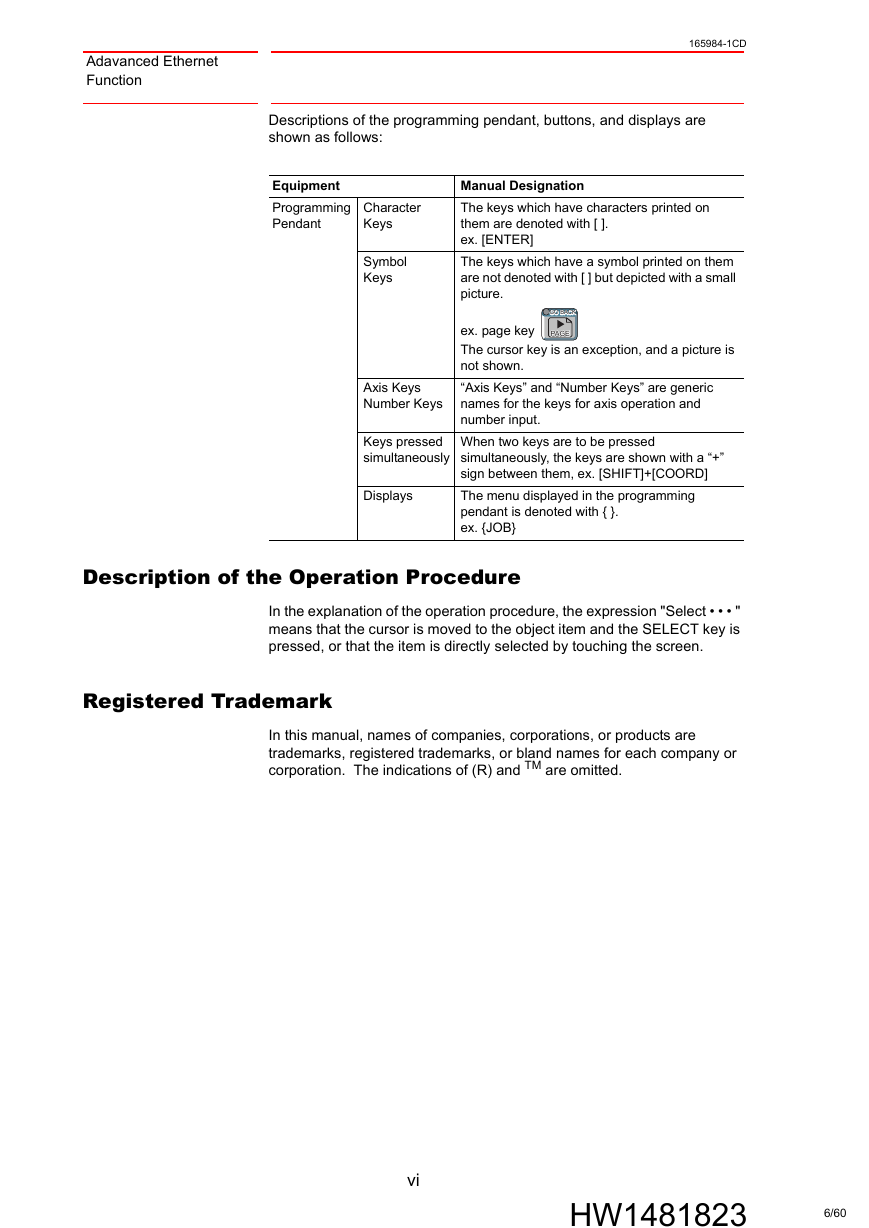
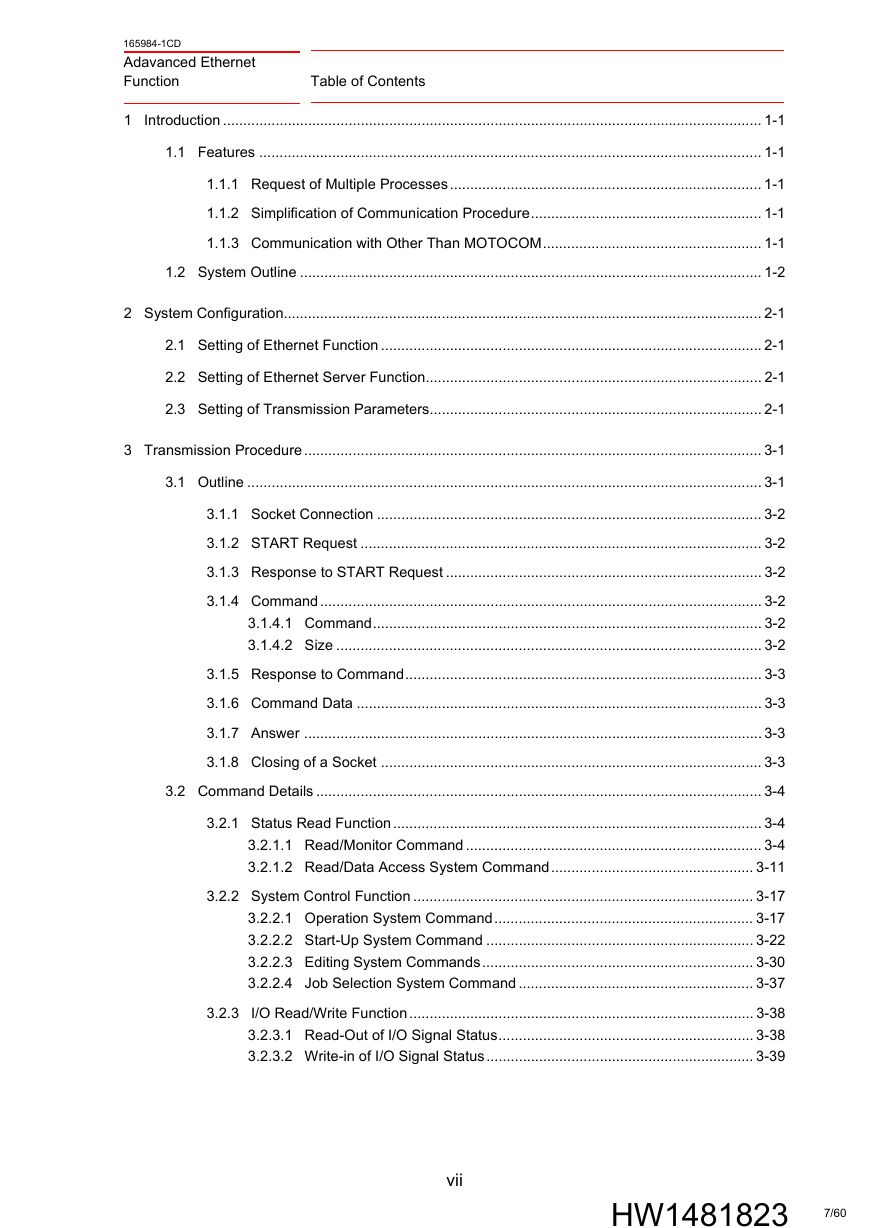
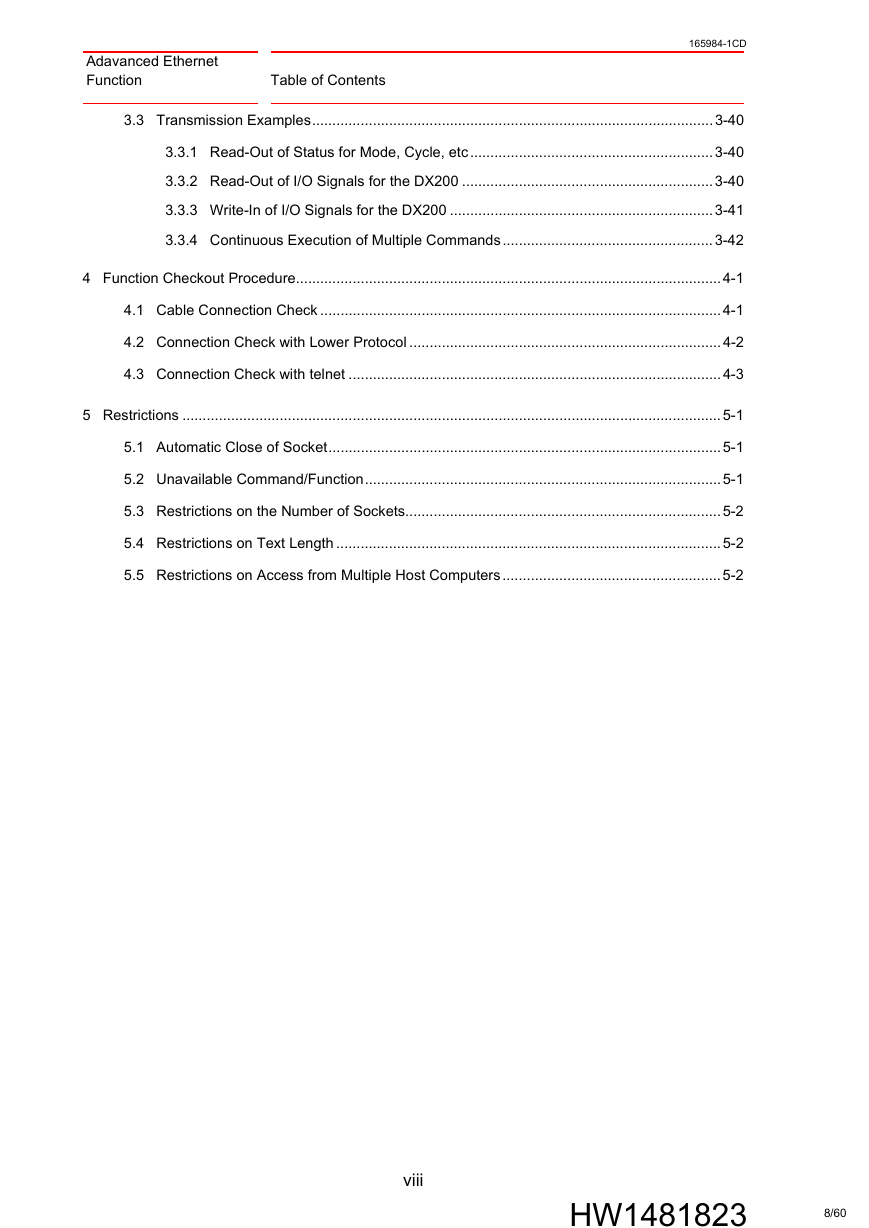








 2023年江西萍乡中考道德与法治真题及答案.doc
2023年江西萍乡中考道德与法治真题及答案.doc 2012年重庆南川中考生物真题及答案.doc
2012年重庆南川中考生物真题及答案.doc 2013年江西师范大学地理学综合及文艺理论基础考研真题.doc
2013年江西师范大学地理学综合及文艺理论基础考研真题.doc 2020年四川甘孜小升初语文真题及答案I卷.doc
2020年四川甘孜小升初语文真题及答案I卷.doc 2020年注册岩土工程师专业基础考试真题及答案.doc
2020年注册岩土工程师专业基础考试真题及答案.doc 2023-2024学年福建省厦门市九年级上学期数学月考试题及答案.doc
2023-2024学年福建省厦门市九年级上学期数学月考试题及答案.doc 2021-2022学年辽宁省沈阳市大东区九年级上学期语文期末试题及答案.doc
2021-2022学年辽宁省沈阳市大东区九年级上学期语文期末试题及答案.doc 2022-2023学年北京东城区初三第一学期物理期末试卷及答案.doc
2022-2023学年北京东城区初三第一学期物理期末试卷及答案.doc 2018上半年江西教师资格初中地理学科知识与教学能力真题及答案.doc
2018上半年江西教师资格初中地理学科知识与教学能力真题及答案.doc 2012年河北国家公务员申论考试真题及答案-省级.doc
2012年河北国家公务员申论考试真题及答案-省级.doc 2020-2021学年江苏省扬州市江都区邵樊片九年级上学期数学第一次质量检测试题及答案.doc
2020-2021学年江苏省扬州市江都区邵樊片九年级上学期数学第一次质量检测试题及答案.doc 2022下半年黑龙江教师资格证中学综合素质真题及答案.doc
2022下半年黑龙江教师资格证中学综合素质真题及答案.doc